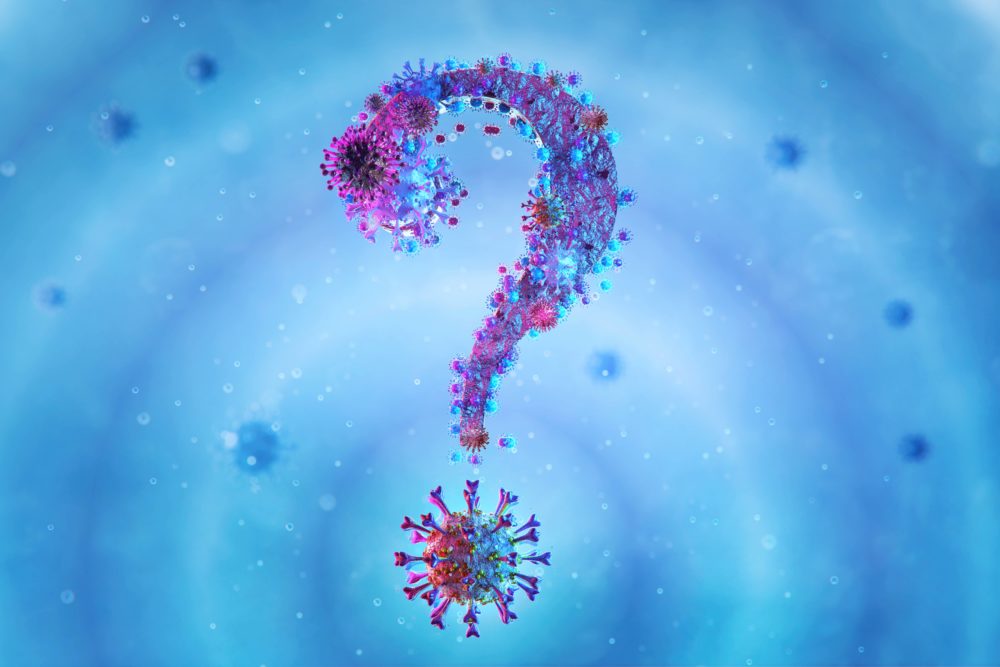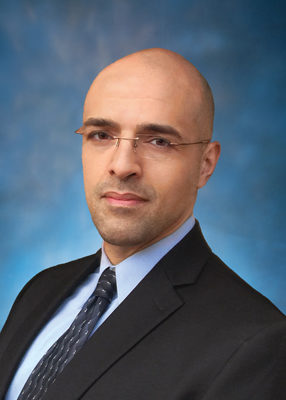
It’s been a year since businesses and schools shut down, and we began sheltering- in-place and social distancing. Today, vaccination efforts are front and center, and there are many questions about the roll-out of vaccines, supplies, safety, variants of COVID-19 and more. According to senior vice president Tarek Salaway of Kaiser Permanente, health-care workers are working tirelessly these days. “Their unwavering dedication and commitment to caring is unlike anything I have ever seen in my career, as we support our community through crises, evacuations and a pandemic.” Salaway candidly answers questions about the vaccine, vaccination efforts and what we can learn from the experience.
Do the federal government’s new national vaccination programs, such as deploying the military to help distribution, encourage you?
Absolutely! Responding to, mitigating the spread of, and eradicating COVID-19 all require a coordinated, all-hands-on-deck approach. As supplies become more available from the state, mass-vaccination sites will be critical in urban areas across the state to help vaccinate large populations and stop the spread of COVID-19. Currently, we are collaborating with state and local government agencies, our public health partners and other health-care providers to activate vaccination venues—when supplies allow—to help get as many people vaccinated as possible. In the North Bay, we have set up multiple locations to safely deliver vaccines at our medical campuses and within our communities to ensure adequate access for our members and the communities we serve. We remain committed to sharing information broadly about these sites as more open to serve our community.
In the meantime, it’s essential that everyone continue to protect themselves and others by using masks, hand washing, social distancing and avoiding gatherings.
What do you say to those that are eagerly waiting to be vaccinated?
After months of physical distancing and caring for one another’s health and safety, news of the vaccine roll-out offers great hope—and new challenges. Kaiser Permanente is committed to getting the COVID-19 vaccine to our members and communities as soon as possible, in accordance with state guidelines, equitably and as vaccine supplies allow.
The unfortunate reality is that the COVID-19 vaccine supply is currently very limited  and unpredictable. It is something for which we wait patiently and eagerly from all manufacturer and government supply chains. We have been following the state’s vaccine prioritization, which required starting with vaccinating health-care workers and staff in long-term care facilities. While continuing to do that, as supplies enable, we are now also focusing on vaccinating those 75 and older and expanding to those 65 and older in the days and weeks ahead. At the time of this interview, we have vaccinated 666,419 Californians, including more than 125,000 health-care workers and a large percentage of our members 75 and older. With more vaccine expected in the weeks and months ahead, we’re increasing our capacity to deliver more than 600,000 vaccine doses per week in California. In Northern California, we have administered more than 350,000 first and second doses of vaccine. Our vaccination sites are great examples of the all-hands-on deck approach, with nurses and managers from multiple departments being deployed to assist in an efficient and safe vaccination process. Our patients and community members have commented that the process has been extremely well organized and smooth. Our coordinated and integrated system has allowed us to get the vaccine doses into peoples’ arms very quickly and efficiently as we look forward to receiving more vaccine supply from the state.
and unpredictable. It is something for which we wait patiently and eagerly from all manufacturer and government supply chains. We have been following the state’s vaccine prioritization, which required starting with vaccinating health-care workers and staff in long-term care facilities. While continuing to do that, as supplies enable, we are now also focusing on vaccinating those 75 and older and expanding to those 65 and older in the days and weeks ahead. At the time of this interview, we have vaccinated 666,419 Californians, including more than 125,000 health-care workers and a large percentage of our members 75 and older. With more vaccine expected in the weeks and months ahead, we’re increasing our capacity to deliver more than 600,000 vaccine doses per week in California. In Northern California, we have administered more than 350,000 first and second doses of vaccine. Our vaccination sites are great examples of the all-hands-on deck approach, with nurses and managers from multiple departments being deployed to assist in an efficient and safe vaccination process. Our patients and community members have commented that the process has been extremely well organized and smooth. Our coordinated and integrated system has allowed us to get the vaccine doses into peoples’ arms very quickly and efficiently as we look forward to receiving more vaccine supply from the state.
With the additional doses on the way, and a more consistent supply moving forward, we’re now scheduling vaccine appointments several weeks out. This will make it easier for you to get an appointment and plan ahead for your vaccination. This week, we also began reaching out to members 65 and older to schedule vaccine appointments—starting with the people at highest risk of exposure or complications due to COVID-19.
You may also have heard that California plans to expand vaccine eligibility soon for people aged 16 to 64 with disabilities or severe underlying conditions that put them at high risk if they contract COVID-19. Based on state guidance, we’ll continue to expand vaccinations for priority groups by looking at age, health risks and job types.
Kaiser Permanente’s longstanding commitment to health equity is reflected in our approach to COVID-19 vaccinations across the state as well as in the North Bay. In partnership with the state, we’ll also be opening additional vaccination hubs and temporary clinics to make the vaccine available to our most vulnerable and underserved populations and communities, including those with limited mobility, disabilities or other access challenges.
We are grateful for everyone’s patience. We are eager and excited to ramp up vaccination appointments for our members and communities as supply allows, and look forward to broadly spreading the hope, joy and peace of mind that comes along with being vaccinated.
The kp.org/covidvaccine website has the latest information and is updated regularly as new information becomes available.
What do you say to those who don’t believe vaccinations are safe?
The health and safety of our communities is our top priority. It’s been nearly a year since we started the battle against COVID-19, and in that time all our lives have been changed—and far too many have dealt with great personal loss. The vaccines are an important to tool to help stop the pandemic. The ones we are utilizing have been rigorously evaluated by our experts and independent scientific reviewers to make sure they’re safe and effective. Kaiser Permanente is participating in some of the COVID-19 vaccine clinical trials and is closely following the research.
There are many protections in place to help ensure that COVID-19 vaccines are safe and effective. This includes large, rigorous multi-stage clinical trials and scientific reviews to confirm the results of these trials. Those who receive the vaccine are carefully observed by trained registered nurses for any immediate reactions and are provided instructions and care to address the most common side effects, such as soreness at the injection site.
What future issues could arise from COVID-19 variants?
According to the CDC, information about the characteristics of variants is rapidly emerging. Scientists are working to learn more about how easily they might spread, whether they could cause more severe illness and how currently authorized vaccines will protect people against them. Data continues to support that current vaccines protect against COVID-19 and are strongly recommended to prevent illness.
Importantly, these mutations have not changed the manner in how the virus is transmitted. The virus predominately spreads through respiratory droplets with close contact. It is more important than ever that we continue to follow the essential infection prevention practices of the pandemic that we know work to prevent spread: wearing masks, physical distancing and avoiding social gatherings to prevent spread of COVID-19.
In a realistic-case scenario, when do you expect the pandemic to be under control?
Honestly, it is hard to predict, as there are many variables, including vaccination-supply production and supply-distribution timelines, the prevalence and trajectory of variants, and level of herd immunity. Our hope, with increased vaccine supply and utilization, is that it is soon.
In the meantime, we can all play a part in stopping the spread of COVID-19. We continue to encourage everyone to practice the following healthy habits to protect themselves and others. (See “Tips to Stay Healthy.”) We remain committed to and have the infrastructure for deploying the vaccine as quickly and as widespread a manner as possible along with all our partners.
What can we learn from this experience? Or, what have we already learned? How about a best- and worst-case scenario?
Fortunately, we were well positioned to address this public health crisis—long before it appeared—because our doctors, hospitals and health plan are integrated, giving us the ability to act quickly. We developed comprehensive surge plans, expanded virtual-care capabilities to unparalleled levels, and built a regional lab to increase our internal-testing capabilities. Leveraging our evidence-based best practices and extensive research and data archives, we developed playbooks for community safety-net providers, employer groups and other health-care systems to help guide their response efforts.
Additionally, COVID-19 has helped raise awareness about the importance of public health, which will lead to more upstream investments, pro-health policies, and substantive change. It has also forced a long overdue reckoning about health disparities and the social determinants of health. Good health is a fundamental right for all—which is why we are committed to partnering with government agencies, local businesses, nonprofits and other safety-net organizations to leverage resources that improve health outcomes, expand access and promote equity for vulnerable and under-served populations.
Lastly, and very importantly, as we have seen in the past in the face of fires and evacuations, we have been inspired by how our amazing community has come together once again in the face of crisis to come through with dignity, strength and grace. We are incredibly grateful for the tireless dedication of our entire team who is expertly and compassionately caring for and protecting our patients, members, communities, and each other.
Tips to Stay Healthy
Develop good daily habits. Get plenty of rest, drink plenty of fluids, eat healthy foods, and manage your stress to keep your immunity strong.
Comply with public-health orders. Local and state governments may reinstate stay-at-home orders, if there’s a resurgence in cases.
Watch for symptoms. If you or anyone in your family develops any symptoms such as fever, cough, shortness of breath or loss of taste or smell, please do not hesitate to contact your doctor.
Wear a mask in community settings. The Centers for Disease Control and Prevention recommends that people wear a cloth face covering to cover their nose and mouth when in public settings. This public-health measure is in addition to social distancing, avoiding crowded spaces, frequent hand washing and other everyday preventive actions to help reduce the spread of COVID-19.




